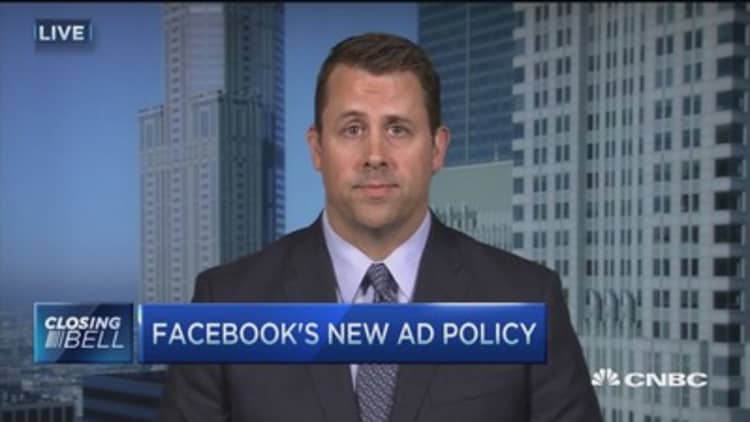Marketers have given a thumbs up to Facebook's announcement this week that it will offer new pricing options for video ads.
But many still say the changes don't go far enough, and analysts say the additional demands advertisers are making may signify a shift in the balance of power away from new media platforms and toward marketers, as the battle for social ad dollars intensifies and marketers adjust their strategies in response to consumer reaction.
Facebook said this week that advertisers now have the option of paying for an ad only when it's seen for at least 10 seconds, rather than paying the moment the ad comes onto a user's screen.
It's a move advertisers have been urging for some time, so that clients are not charged for video that rolls without actually being watched by consumers. (Trying to measure how effective an ad campaign is—and even whether anyone is paying attention—is of course a perpetual advertising challenge.)
The social media giant contends that ads can have an impact from the first frame of video—a position it says is supported by a Facebook-Nielsen study—but the company wants to give marketers what they want, said a Facebook spokesperson.
"We're testing this way of buying because we want to give marketers choice in how they buy video ads," the spokesperson said.
Even with the change, though, big advertisers want more—especially more evidence that their campaigns are being seen.
Lisa Weinstein, Starcom Mediavest Group's president of global digital data and analytics, said the challenge is still figuring out if an ad is being seen by its target audience and delivering the intended message.
Read MoreFacebook telepathy? Zuckerberg thinks it can happen
WPP's GroupM, whose investments for clients include Unilever, Dell and Ford Motor (and account for 1 in 3 ads globally) agrees that social media in general needs to go further to satisfy many of its clients.
"This is a step in the right direction, it is, but there is still quite a ways to go," said Ari Bluman, GroupM North America's chief digital investment officer.
GroupM has come out aggressively with clients demanding more transparency and better measurement tools for digital video ads. "I think folks that are hoping it stays like this are fooling themselves—change is automatic," Bluman added.
Dentsu Aegis Network, which counts General Motors, Macy's and Microsoft among its clients, does not expect Facebook's move to change the way companies buy video ads on the platform. "If I want to get as many people as possible then Facebook is a no-brainer," said Travis Freeman, Dentsu Aegis Network's head of social.

Advertisers would also like Facebook to let them wrap their products around user-generated content—a move not likely to be met with approval by users uploading videos of grandchildren's ballets and grade school graduations.
"Facebook has the opportunity to unlock user-generated content for advertisers the way that, for example, Snapchat has done with Brand Stories and Twitter with Project Lightning," said Starcom's Weinstein. (Facebook wouldn't comment on whether it's considering this. Also, Snapchat is tweaking its advertising strategy and no longer sells Brand Stories.)
Both Facebook and Twitter have made video a priority, eyeing the growing pool of ad dollars once reserved for broadcast. Carolyn Everson, who runs advertising at Facebook told CNBC, "We think mobile video is actually going to be even way more significant than even the first mobile revolution was for Facebook."
Users of Facebook view more than 4 billion videos a day, counting any video that plays for at least three seconds on the screen, the company said.
Twitter's chief revenue officer, Adam Bain, told CNBC the company is absolutely making a move into video, and is trying to make its platform even more marketer-friendly.
"We will only charge marketers when the video becomes 100 percent in view. And so what that means is we just don't think it is right for other folks to charge when only one pixel of an ad comes into view for one millisecond. ... We've stepped out from the rest of our peers in the industry and taken what we think is a bold move," said Bain.
Read MoreThe outlook for social media stocks for the 2nd half of 2015
It makes perfect sense that advertisers would only want to pay for what people actually see, say analysts.
"The viewability issue is top of mind for marketers at the present time. The standard Facebook was putting forward previously was not going to be acceptable. They will still need to eventually allow for third-party verification, but most will see this as a positive step," said Pivotal Research Group analyst Brian Wieser.
Competition for video ad dollars is intensifying, with Facebook, Twitter and YouTube all battling for creative content to serve ads around. On Wednesday, Facebook announced that it will offer some creators, including the NBA, Fox Sports and Funny or Die, a 55 percent cut of advertising revenue for ads served around their content putting the social network in more direct competition with YouTube.


